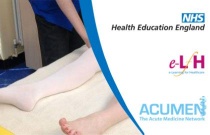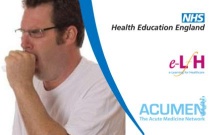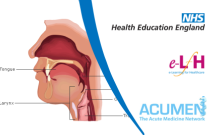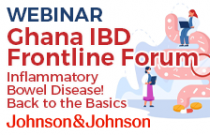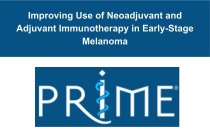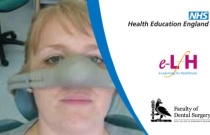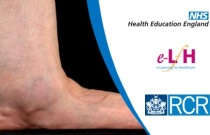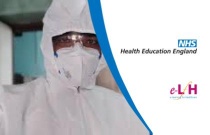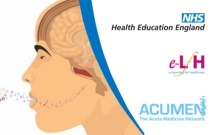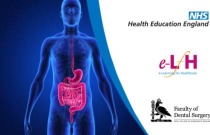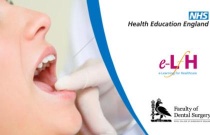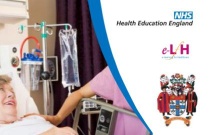Case Report: An unusual case of small bowel volvulus associated with pneumatosis intestinalis
Alia Zouaghi,Dhafer Hadded,Mesbahi Meryam,Yazid Benzarti,Mona Cherif,Haithem Zaafouri,Khalil Ben Massoud,Chiraz Chamekhi,Anis Ben Maamer
Pneumatosis cystoid intestinalis (PCI) is a low-incidence pathology defined by the existence of air in the small intestine or colon wall.n
WEBINAR PRE AND POST EXAM
Mr WCEA Administrator
Course Description* Please add a course description with a minimum of 20 characters.
Profilaxis Oral Previa a la Exposición
A Johns Hopkins University Affiliate
El curso de aprendizaje en línea sobre la PrEP oral para profesionales clínicos brinda instrucciones para administrar los servicios de PrEP de acuerdo con la información de la herramienta de la OMS para la implementación de la profilaxis previa a la exposición de la infección por VIH (PrEP). El curso está dirigido a profesio....
TESTING SICK KIDS
Mr WCEA Administrator
The research study is about attitudes and confidence levels of people who take the CPD courses. Your participation is voluntary and your answers are confidential. If we publish this data, no individual data will be presented. We value your participation. Please see our information sheet and consent statement here ( https://www.g....
Risk Factors for Pulmonary Embolism
David Keith Ward
Explanation of the origins and utilisation of the modified Wells score for pulmonary embolism in practice.
Rarer Causes of Haemoptysis
Prina Ruparelia
This session will discuss the rarer causes of haemoptysis.
Drug Induced Hoarseness and Stridor
Salman Haider
This session explores the causes of drug-induced hoarseness and stridor.
Inflammatory Bowel Disease! Back to the Basics
Dr Adwoa Agyei-Nkansah
The objectives for IBD frontline forum is to share the latest research and advancements in the field of inflammatory bowel disease (IBD), promoting collaborative discussions to exchange best practices, addressing challenges in frontline management of IBD patients, enhancing interdisciplinary communication, providing education an....
Addressing Environmental Injustice and Health Disparities: A Global Imperative
Prof. Stephen Abah
This course is designed for policymakers, environmental advocates, public health professionals, and anyone passionate about creating a fair and healthy world. Together, we will explore strategies to ensure equitable access to environmental resources, enhance public health through integrated environmental policies, and foster glo....
Preparing for the Future: Developing Comprehensive Epidemic Preparedness and Response Plans
Prof Omosivie Maduka
Epidemics past and present provide us with an opportunity to prepare for the future, but are we doing enough, or will future epidemics catch us off-guard again?
Medication Errors
Mr Samuel Nowa
Medication errors have been reported in different healthcare settings across the world. Even though they can be avoided, the need for getting knowledge on how to avoid them is inevitable. Addressing medication errors can help to improve public health in general. This lecture will cover some of the aspects related to medi....
Management of Sexually Transmitted Diseases
Dr. Daniel Kaonga
This lecture will discuss some common sexually transmitted diseases, their diagnoses and management guidelines.
Developing a Stand-out Abstract
Dr. Foster Osie Baah
This webinar provides guidance on creating high-quality abstracts. It covers the structure and components of effective abstracts, tips for writing clearly and concisely The presenters offer insights on crafting compelling titles, organizing content, and highlighting key findings to maximize the chances of abstract acceptance. It....
Improving Use of Neoadjuvant and Adjuvant Immunotherapy in Early-Stage Melanoma
Jason J Luke, Vishal Anil Patel, Donna M Chiefari, Stephanie Joyce, Lisa Wakefield
0.50 Hours
Recent advances in neoadjuvant and adjuvant immunotherapy are improving outcomes for patients with early-stage melanoma. In this on-demand video, join us for an expert-led discussion on insights and findings from a quality improvement initiative at a large community oncology network. Don't miss this discussion on the lates....
Professional guidelines for conscious sedation in dental practice
Matt Dorman
The session outlines the current UK guidelines for the practice of conscious sedation in dentistry. The application of the guidelines to clinical practice and the training required for the dental team to undertake conscious sedation in primary care will be considered.
Audit as a Tool for Quality Dentistry
Laura Gartshore
Evidence-based dentistry informs every clinical decision that we make. Quality improvement activities, including clinical audit, allows dental professionals to review and evaluate the quality of their work.
Pes Planus
JM Rehman
This session will cover the definition, types, normal and abnormal radiographic anatomy, causes, illustrative and self assessment cases, imaging strategy and management of pes planus.
Environmental Sustainability in Dentistry
Amarantha Fennell-Wells and Stefi Barna
Sustainable dentistry delivers high-quality care while minimising damage to the environment. This session prepares dental care professionals and support staff in primary and secondary care to implement changes in practice that reduce cost and pollution while improving dental health.
Donning of Personal Protective Equipment (PPE) - Guide for Clinical Hospital Staff
National Health Service
Public Health England (PHE): Donning of Personal Protective Equipment (PPE) – This video shows how to safely don (put on) the Personal Protective Equipment (PPE) specific to COVID-19. This guidance outlines infection control for healthcare providers assessing possible cases of COVID-19.
Brain Tumours Affecting Speech: Types, Treatment, Management
Sadia Ismail
This session describes the presentation, investigation and management of speech problems due to brain tumours. It covers the key points for initial management and also examines further treatment pathways.
Disorders of the Gastro-intestinal Tract
Andrew Healey and Ahmed Al-Bahrani
This session will give you an understanding of basic anatomy, function, physiology and pathology of the gastrointestinal tract (GI) tract. It will discuss common conditions which can become chronic and can present with oral symptoms and signs.
Local Anaesthetic Techniques in the Maxilla
Andrew Carr
This session will detail techniques for achieving local anaesthesia in the maxilla.
Universal Precautions and Cross Infection
Matthew Thomas
Standard precautions should be used for all procedures involving body fluid. They are based on the principle that all body fluids are contaminated. This session explains risk assessment and the precautions needed in all situations.






